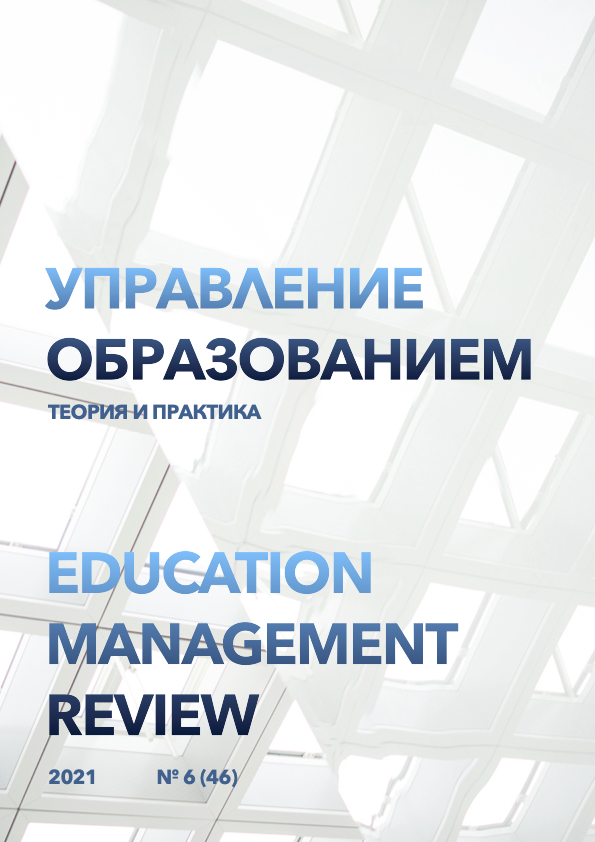Development of public administration tools for academic mobility of youth in the general environment of population migration in the period of globalization of innovative business structures
DOI:
https://doi.org/10.25726/s1173-9420-1888-xKeywords:
Students, development, globalization, formation, entrepreneurship, innovation, regions, public administration, socio-economic developmentAbstract
Youth as a class of students is determined by the fact that they are ready not only to form innovative thinking, but also to change their place of residence, which changes accordingly to the tasks that young people set for themselves in the process of studying individual disciplines, as well as in the formation of their life strategy. The relevance of the research is determined by the fact that the construction of the chosen educational trajectory is determined by the readiness to receive education at a certain stage and change specialization if necessary to study newer disciplines and knowledge formation. The novelty of the study is determined by the fact that the mobility of academic students is determined not only by the accompanying set of data obtained, but also by the
impact on migration flows. The consequence of such migration flows may be the displacement of the social capital of society as a whole. The authors show that the formation of academic mobility has a direct correlation and contributes to the achievement of conditions for the personal development of students. The practical significance of the research is determined by the fact that student mobility allows to expand the possibilities of cross-cultural exchange and identify potential directions of globalization of society. The authors determine that the possibility of forecasting the studied phenomenon will give an additional incentive to the economic stratification of society.
References
Bezrukov, A., Ziyatdinova, J., Sanger, P., Ivanov, V. G., & Zoltareva, N. (2018). Inbound International Faculty Mobility Programs in Russia: Best Practices. Advances in Intelligent Systems and Computing, 715, 260–265. https://doi.org/10.1007/978-3-319-73210-7_31
Bosman, A. A. P., Gardarsdóttir, H., Härmark, L., Lourenço, L. M., Wuliji, T., Bates, I., & Carter, S. (2007). Academic mobility in pharmacy faculty: An exploratory study. Pharmacy Education, 7(2), 177–181. https://doi.org/10.1080/15602210701256757
Cots, J. M., Aguilar, M., Mas-Alcolea, S., & Llanes, À. (2016). Studying the impact of academic mobility on intercultural competence: a mixed-methods perspective. Language Learning Journal, 44(3), 304– 322. https://doi.org/10.1080/09571736.2016.1198097
Czaika, M., & Toma, S. (2017). International academic mobility across space and time: The case of Indian academics. Population, Space and Place, 23(8). https://doi.org/10.1002/psp.2069
Eveland, T. J. (2019). Supporting first-generation college students: analyzing academic and social support’s effects on academic performance. Journal of Further and Higher Education. https://doi.org/10.1080/0309877X.2019.1646891
Finch, H., Lapsley, D. K., & Baker-Boudissa, M. (2009). A survival analysis of student mobility and retention in Indiana charter schools. Education Policy Analysis Archives, 17, 1–15.
Finn, K. (2017). Multiple, relational and emotional mobilities: Understanding student mobilities in higher education as more than ‘staying local’ and ‘going away.’ British Educational Research Journal, 43(4), 743–758. https://doi.org/10.1002/berj.3287
Gerhards, J., Hans, S., & Drewski, D. (2018). Global inequality in the academic system: effects of national and university symbolic capital on international academic mobility. Higher Education, 76(4), 669–685. https://doi.org/10.1007/s10734-018-0231-8
Gunter, A., & Raghuram, P. (2018). International study in the global south: linking institutional, staff, student and knowledge mobilities. Globalisation, Societies and Education, 16(2), 192–207. https://doi.org/10.1080/14767724.2017.1401453
Kirpitchenko, L. (2014). Comparing experiences of academic mobility and migration. Comparative Sociology, 13(2), 215–234. https://doi.org/10.1163/15691330-12341301
Lanzendorf, U., & Kehm, B. M. (2010). Student and faculty transnational mobility in higher education. International Encyclopedia of Education. https://doi.org/10.1016/B978-0-08-044894-7.00850-2
Morley, L., Alexiadou, N., Garaz, S., González-Monteagudo, J., & Taba, M. (2018). Internationalisation and migrant academics: the hidden narratives of mobility. Higher Education, 76(3), 537–554. https://doi.org/10.1007/s10734-017-0224-z
Murphy, M., McHale, D., Dyrenfurth, M., & Barnes, J. (2011). Successful engineering and technology student mobility: Key student perspectives and quality determinants before, during and after student exchange under the Atlantis programme. In SEFI Annual Conference 2011 (pp. 890–899).
Quintana, R., & Correnti, R. (2019). The Concept of Academic Mobility: Normative and Methodological Considerations. American Educational Research Journal. https://doi.org/10.3102/0002831219876935
Salajan, F. D., & Chiper, S. (2012). Value and benefits of European student mobility for Romanian students: experiences and perspectives of participants in the ERASMUS programme. European Journal of Higher Education, 2(4), 403–422. https://doi.org/10.1080/21568235.2012.737999
Selya, A. S., Engel-Rebitzer, E., Dierker, L., Stephen, E., Rose, J., Coffman, D. L., & Otis, M. (2016). The causal effect of student mobility on standardized test performance: A case study with possible implications for accountability mandates within the elementary and secondary education act. Frontiers in Psychology, 7(JUL). https://doi.org/10.3389/fpsyg.2016.01096
Sorber, N. M. (2018). Early land-grant colleges and students in the northeastern United States: A history of regional access and mobility patterns in Maine, Massachusetts, and New York, 1862-1878. Agricultural History, 92(1), 101–123. https://doi.org/10.3098/ah.2018.092.1.101




